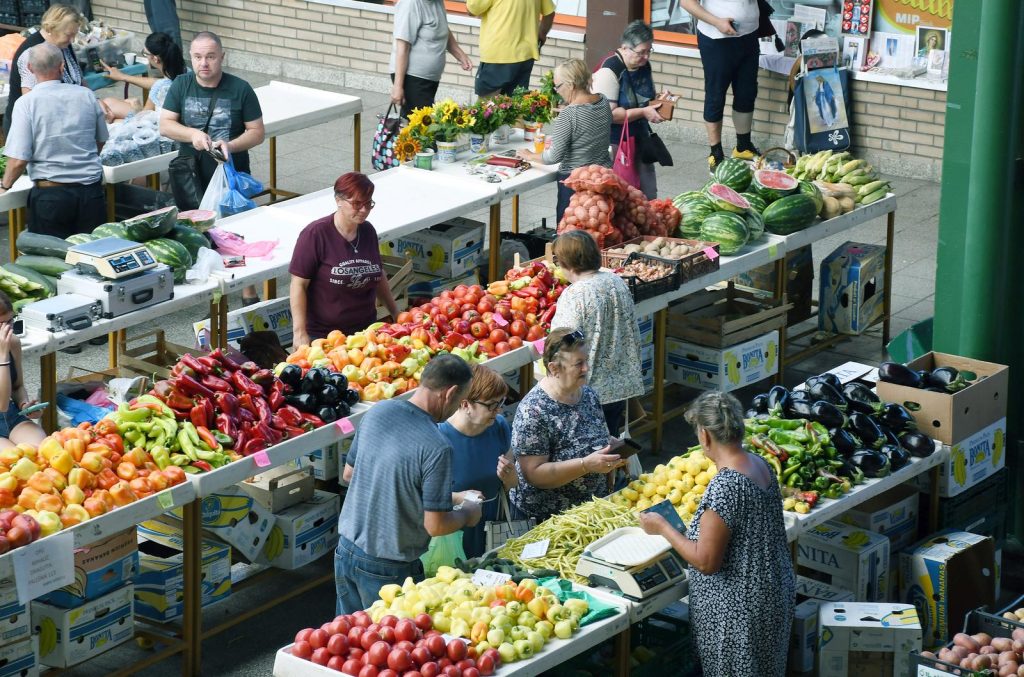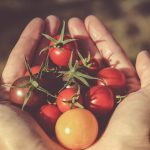As Glas Slavonije reports, In the heart of Slavonia, Croatia’s open-air food factory, in Đakovo, compared to the 35-year average of 760 liters per year, so far in 2022, 190 liters of rain are missing. From the beginning of the year to the present day, according to the records of Bartolo Bačić, who monitors the weather conditions in Đakovo, only 261 liters of rain fell in this part of the country. “If it rains now, it’s too late”, said OPG member Mato Kretonić from Budrovac, who sells the fruits of his labour from the garden with his wife every day at the Đakovo market.
The drought, which resulted in scorched earth, will not abate even in autumn, and farmers and vegetable growers are announcing large deficits in the production of corn, sugar beet, vegetables, fruit, etc., which will, of course, be reflected in the further increase in prices. At the city market in Đakovo, they have kept them at the level that arose after last year’s jump. “The prices were not corrected, even though it was necessary, but if that had happened, I don’t know who would have been able to sell their goods”, says Blaženka Škorvaga of the OPG from Punitova. Farmers do not have good news for the coming period.
“This is one of the driest years ever. I am a realist by nature, and I can say that in the coming time there will be little due to drought and other disturbances. What was hinted by experts a few months ago – that there will be a food shortage, is already visible now. A difficult period awaits us in winter and spring when it will be difficult to get food at all”, warns the vegetable farmer Kretonić.
“Peppers cost 12 kuna, potatoes 8, tomatoes 10, or 5 kuna in wholesale, cucumbers, onions and cabbage cost 8, carrots 10, pumpkins range from 5 to 7 kuna per piece, and a special kind of zucchini goes for 15 kn/kg”, Mata’s wife Marica Kretonić lists the prices at her stand. A kilogram of yellow beans costs 50 kuna. These OPGs sell cooking corn for 3 kuna per piece. “Its quality is first class”, adds Marica. Keeping prices at (almost) last year’s level, warns her husband Mato, puts them in an unenviable position.
“Next year, we practically won’t be able to organise production, because there is no working capital”, says this OPG employee.
When asked if people are buying less because of price increases, or inflation, the answer is negative.
“People keep buying because they don’t have their own products due to these extreme weather conditions, but shopping for winter food is also declining this year, and people are also losing the habit of preparing it. They used to buy it by the bag, but now people only buy ten heads of cabbage for pickling”, says Budrovčanin.
And the vegetable gardener Škorvaga warns that there will be a shortage of food soon.
“There is a shortage already. There will be a lack of tomatoes, peppers, potatoes… There is a lack of fruit, you can see which fruits are local, because they are much smaller, and which are imported. And customers are aware that food production is like that, the products are worse because of the drought, and they understand”, says Škorvaga, whose production has been suffering for two years due to the capricious nature, storms – last year the wind destroyed her greenhouses, and this year the ice beat the seedlings, counting 300,000 plants. Damage – HRK 100,000.
Production to be cut in half
“I will cut production in half. I can no longer sustain such a large production. Nature can be compensated, but it is too expensive to be marketed, and there is also a high cost of labour and its lack”, says Škrovaga. At her stand, tomatoes cost 10, or 4 kuna in wholesale, peppers 10, corn 2 kuna a piece, melon 7, cucumbers 8 kuna. A kilogram of green beans costs 25 kuna, and half a kilogram 15 kuna.
“People are less likely to buy vegetables for the winter. They say they will eat what they have. Purchases at the market have decreased, and many people do not come anymore especially young people”, says Škorvaga.
A liter of tomato sauce at the market in Đakovo on Saturday cost 20 kuna. The price of the queen of summer fruit – watermelon – at the stand of Marina Grgić from Đakovo cost 3 kn/kg. The vegetable farmer says that she will be ready for the dry autumn – with deep wells.
While more retailers are already dually reporting prices, there are still no buyers’ inquiries on the market about the formation of prices in euros, according to our interlocutors. “Everyone is still silent about it”, says Marica Kretonić, and her husband Mato adds that he will price his products in euros based on his own assessment.
“If I have my own goods, so that I don’t have to resell them, there will be no price shocks with the switch to the euro. It will be rounded to Eurocents – for example, something that comes up to 63 will be rounded to 70 Eurocents”, says Škorvaga and adds: “Some things will be rounded to my detriment, some to the detriment of the customer”.
For more, make sure to check out our Lifestyle section.









